© 2025 ALLCITY Network Inc.
All rights reserved.

Word has gotten out. Not everyone is buying in, but the Colorado Rockies have been named a potential dark horse candidate for 2017 by so many outlets both national and local that one has to wonder how apt the term actually is. Either way, there is a litany of reasons why there is a spirit of optimism around a team that has maxed out at 75 wins this decade.
There is the generally emerging young class of potentially world class players. There is the new, seemingly universally respected manager. There was an offseason that — whatever one may think of the odd aspects of the Ian Desmond deal — saw a club often accused of being cheap, shell out potentially well over 100 million dollars in new contracts.
But, as Denver resident and national analytics guru Jonah Keri stated, it really comes down to the same old “why” it has always been with this, and most, baseball teams; pitching. Keri, a man known for cold, hard data-driven analysis stated the following: “This is the best collection of starting pitching talent the Rockies have ever assembled in their 24-year history. That’s why this team could get really interesting, really soon.”
What led him to make such a claim? Let’s take a look.
Tyler Anderson, 27 (LHP):
Why people are excited:
Anderson burst onto the scene last year after falling off the radar for most national — and more than a few local — prospect evaluators. Making his MLB debut at the age of 26, Anderson reminded everyone in short order why the Rockies used a first-round draft pick on him in 2011.
He employed his excellent mix of pitches and location to pitch — by rate — one of the best seasons in Rockies history. That’s no joke. His 114.1 innings pitched weren’t quite enough to qualify but had he maintained his 3.54 ERA through a few more innings, it would have been the fifth best mark in club history. His 1.29 WHIP would have been tied with Jeff Francis‘ 2006 season for sixth best all time. In fifth place? Last year from the next guy we are going to discuss.
In the 19 games Anderson started, he failed to give at least a Quality Start only four times, and in one of those games he still ended up earning the Win.
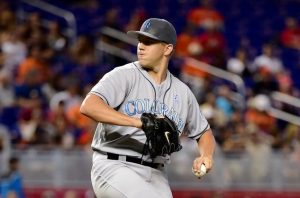
He displayed the mental fortitude to succeed at Coors Field, putting up a 3.00 ERA at home and quickly earned a reputation for toughness. He doesn’t have an overpowering fastball, though it can sneak up on hitters, but his incredibly low 2.20 BB/9 rate proves an ability to be successful while staying in the zone. Not giving up free passes has been shown to have a direct correlation to increased success in Colorado and when you combine that with him being among the best in the game at inducing weak contact, you’ve got yourself a pitcher who could quite easily emerge as the ace of the team with a floor of very-good fourth starter.
Still with very little fanfare, Tyler Anderson remains one of the best kept secrets in MLB.
Why you might not want to get too carried away:
The one blemish on Anderson’s resume, really throughout his entire professional career, has been the injury history. A recurring elbow stress fracture cost him the end of 2013 and all of the 2015 seasons. These injuries are why a first-round pick with college experience still spent so much time in the minors and didn’t debut until he was 26. Of course, like with any second-year player, there is always the potential that the rest of the league will catch up with Anderson. There will be a “book” on him going into next season and the best hitters in the world tend to adjust. But Anderson is already ahead of the curve, even in that regard. So far in his career, when he has been healthy, he has been very, very, good.
Jon Gray, 25 (RHP):
Why people are excited:
Excitement has been growing about Jon Gray since Kris Bryant‘s name was announced as the number two overall pick in the 2013 draft, meaning surely that the fireballer from Oklahoma would be coming to the pitching-starved Colorado Rockies. While it may seem odd in hindsight for anyone to have celebrated missing out on the current Chicago Cubs star, many people in and around the Rockies wouldn’t swap the two players even now after Bryant’s disturbingly amazing 2017 season.
And the reason for that is simple, it’s something I wrote the day he was drafted and doubled down on after watching him pitch in Grand Junction; Gray has the potential to be the best pitcher in Rockies history.
He’s already getting his name into the record books. Pitching in what was still technically his rookie season, Gray struck out 185 batters, good for the sixth best mark in franchise history. Who is ahead of him in terms of individual seasons racking up the Ks? Ubaldo Jimenez twice, Pedro Astacio twice, and Jorge De La Rosa. As we discussed, Gray’s WHIP was also good for sixth place all time. He managed this while pitching 20 fewer innings than the next closest guy.
And the 25-year-old coming into his second full season is just getting started.
His fastball/slider combination is, at its best, among the very best in the league, the latter pitch among leaders in swing-and-miss percentage. He has proven, like Anderson, that he doesn’t fear Coors Field or really much of anything, in fact inviting the challenge and basking in overcoming it.
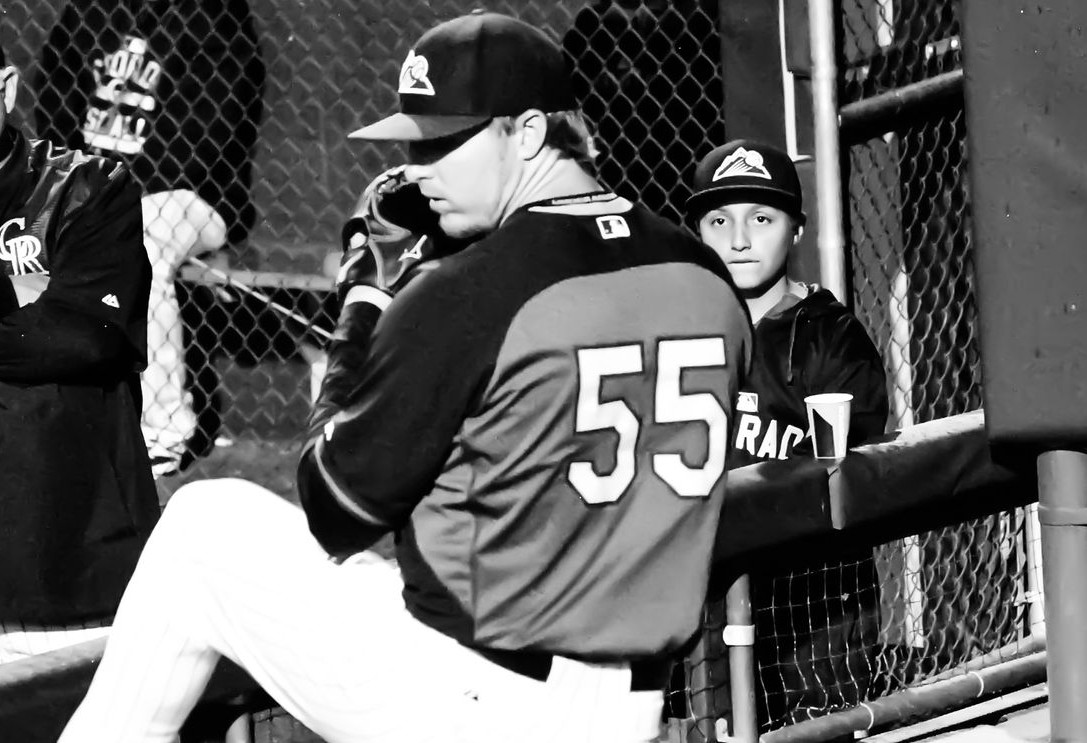
The symbol of his success in that regard came on September 17, when he broke a franchise record by striking out 16 San Diego Padres at Coors Field.
As he told BSN Denver on our podcast, “every guy here wants to be the ace and plenty of guys have the ability to do it … and I want to prove that Coors Field can be mastered. I want to prove that I can do it for years.”
Has has earned the moniker, The Wolf of Blake Street.
Why you might not want to get too carried away:
Stuff happens?
There really aren’t a ton of reasons for hesitation with Gray beyond his tendency to get blown up early in games on occasion and get taken out. This, plus the Coors factor, led to a less-than-stellar 4.61 ERA in 2016 but finding people who believe that won’t come down is near impossible. There might be some doubters still, but at this point Gray has shown the ability that made him such a highly-touted prospect and was putting it together so completely at the end of the season, it would take something very strange to knock him off his current path, which appears to be leading toward greatness.
Tyler Chatwood, 27 (RHP):
Why people are excited:
Tyler Chatwood, it may surprise you to learn, has by rate two of the best seasons ever pitched by a Rockie. His 2013 season saw him post a 3.15 ERA over 111.1 innings with relatively even splits. Sure, he was better on the road — which should be expected for a guy who succeeds more on inducing weak contact than striking everyone out — but it wasn’t anywhere near as extreme as it was in 2016.
| Tyler Chatwood | Home | Road | Total |
| 2013 ERA | 3.50 | 2.72 | 3.15 |
| 2016 ERA | 6.12 | 1.69 | 3.87 |
Chatwood was adamant throughout all of last season that his extreme splits were a bit random and we are inclined to agree. Because of the type of pitcher he is, he will likely always be a bit better on the road but we should expect in 2017 for these numbers to balance back out a bit. It is both unlikely that he will struggle so much at home and unlikely that he remains Clayton Kershaw when pitching away from Coors.
But the fact that Chatwood was the best road pitcher in MLB a year ago should not be undersold. It’s especially important for a Rockies team with a unique problem when it comes to scoring runs while dealing with the Coors Field Hangover Effect.
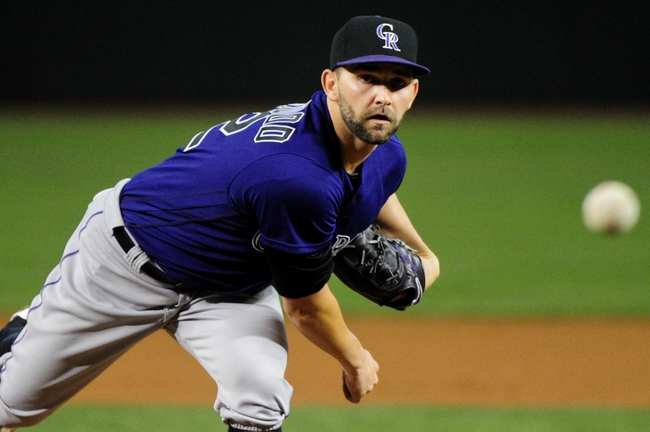
If this were the average Rockies team, Tyler Chatwood would likely be the ace at the top with a bunch of question marks filling in behind him. As it stands now, Chatwood looks to be more in line for the middle of the rotation. That’s right, the best pitcher in baseball on the road in 2016 might not be able to win one of the top two spots in the Colorado Rockies rotation.
Why you might not want to get too carried away:
Like with fellow Tyler, Anderson, Chatwood’s concerns almost entirely boil down to his health. He’s had Tommy John surgery twice. He went on the DL two separate times last season with back issues that took him a little longer to recover from than anyone first thought they would. His small frame and violent delivery make one wonder if he will ever put together a season where he pitches 200 innings, having maxed out at 158.
Chad Bettis, 27 (RHP):
Why people are excited:
It’s a stat almost everyone scoffs at these days, but Bettis won 14 games in 2016 in large part because of his ability to pitch consistently into the seventh inning and put together strings of Quality Starts, another iffy stat for many. The point is, despite the uninspiring 4.79 ERA in 2016, Bettis mostly kept individual games from getting away (a big deal at Coors Field) and even though it would often cost him a few extra runs, you could rely on him to get a few extra innings and give the much-used bullpen a spell.
If advanced statistics are your thing, what we are getting at here is perhaps best reflected in Bettis’ 2.6 fWAR mark which was better than Chatwood’s 2.1 despite the latter being much better by rate. Whenever Bettis takes the field you, and his teammates, can bet he’s gonna give a full day of work.
He’s never had a ceiling that gets people overly excited but since returning to the rotation after a brief experiment as a reliever, he has been a pitcher whose team wins when he takes the mound more often than not. Like with fellow 27-year-old Tyler Chatwood, Bettis will start the season in a role he is perfectly suited for, middle-rotation, rather than being asked to be the dominant guy at the top. As either the fourth or fifth starter, Bettis represents a huge upgrade over what the Rockies have had there in years past and a tough match-up for teams that don’t have 14-game-winners at the back of their rotation.
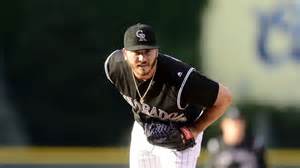
Bettis has also separated himself as a leader on this team and has been at the head of a movement to bring confidence in the curveball back to Coors Field. He discussed this (also his love for the game of chess) with us on our podcast and it was echoed by Jon Gray who has used what he has learned from Bettis to a dramatic effect. His willingness to tweak his arsenal and constantly reevaluate the game are key to his consistency.
Chad Bettis is a thinking man’s pitcher and that really comes in handy given the insane differences one has to take into account when pitching two games at Coors Field and then going on the road to Petco. More than any other pitcher on staff, Bettis has a knack for pitching to the game he is in.
Why you might not want to get too carried away:
The question with Bettis is the age old question with high-floor guys whose ceilings don’t include phrases like “200 strikeouts” or “20 wins.” Bettis seems destined to plateau at 15 wins or so but with so much youth and volatility around him (including injury concerns for other guys) Bettis’ role as the rock of the rotation is absolutely vital and mostly unquestioned.
Jeff Hoffman, 24 (RHP):
Why people are excited:
At one time, Hoffman was considered a talent worthy of the first overall pick in the draft. Tommy John surgery bumped him all the way back to No. 9. Selected by the Toronto Blue Jays exactly one pick after the Rockies took Kyle Freeland in the 2014 draft, Hoffman famously came to Colorado as a centerpiece in the Troy Tulowitzki trade.
Much like Gray in 2015, Hoffman made his MLB debut late in 2016 and got knocked around a bit. He showed flashes of what made him such an exciting prospect, but posted a 4.88 ERA over 31 innings. But again like Gray, there is a near universal expectation that Hoffman will get better and better the more innings he gets at the big league level, having already shown the ability to dominate in the minors.
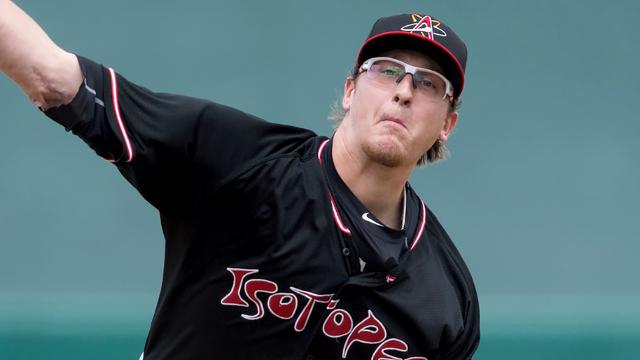
If the curveball renaissance can truly be a game changer for the organization, Hoffman could be the guy to prove that it’s not just a useful pitch at altitude, it can be a devastating one. With the ghost of Denny Neagle‘s curveball still hanging in the thin air, Hoffman’s hook could cure nightmares.
It certainly helps that he backs up his put-away curve with a 97 mph fastball. Hoffman has all the tools — including the immeasurable, intangible ones– to be an ace himself, making him the third guy in this article with that potential.
Why you might not want to get too carried away:
So far in MLB, Hoffman hasn’t shown the kind of command it’s going to take to get the job done. Small sample size noted, if he pitches the exact same way he did a year ago, he will still have games where hitters just can’t catch up to the nastiness of his stuff, but he will have more games where he gets knocked out in the fourth inning.
Most evaluators expect Hoffman to tighten things up. He did, after all, just turn 24 a month ago. There is also the Bud Black factor. Health is another thing that could be a concern moving forward. Hoffman is approximately the 78th Rockies pitcher with a Tommy John surgery on his resume. His career high in innings pitched in a single season is 118.2. He also walked way too many guys in both Triple-A and MLB last season. Again, command issues.
It’s possible Hoffman ends up as one of those super talented guys who never quite put it all together. If you can’t be successful in the zone at this level, you won’t last long.
The Depth: German Marquez, Kyle Freeland, etc.
Why people are excited:
Marquez broke out in a big way in 2016, winning the Eastern League Pitcher of the Year award for the Double-A Hartford Yardgoats, going on to Triple-A Albuqueque proving that he could hang in one of the toughest leagues to pitch in across all of baseball, and then making his MLB debut and missing — by just six days — becoming the youngest player in Rockies history to record a Win. He turned 22-years-old ten days prior to the publishing of this article. He can touch 97 mph with sink and his changeup showed up better than advertised already. What was once thought to be a Corey Dickerson for Jake McGee trade may end up ultimately being remembered as the “German Marquez trade.”
Freeland, the aforementioned first-round pick in 2014, battled through some minor injuries to quickly progress through the system, showcasing a remarkably advanced feel for pitching. We recently covered why we expect Freeland to continue his rapid development and make his impact in 2017 in our Top 25 Under 25 series.
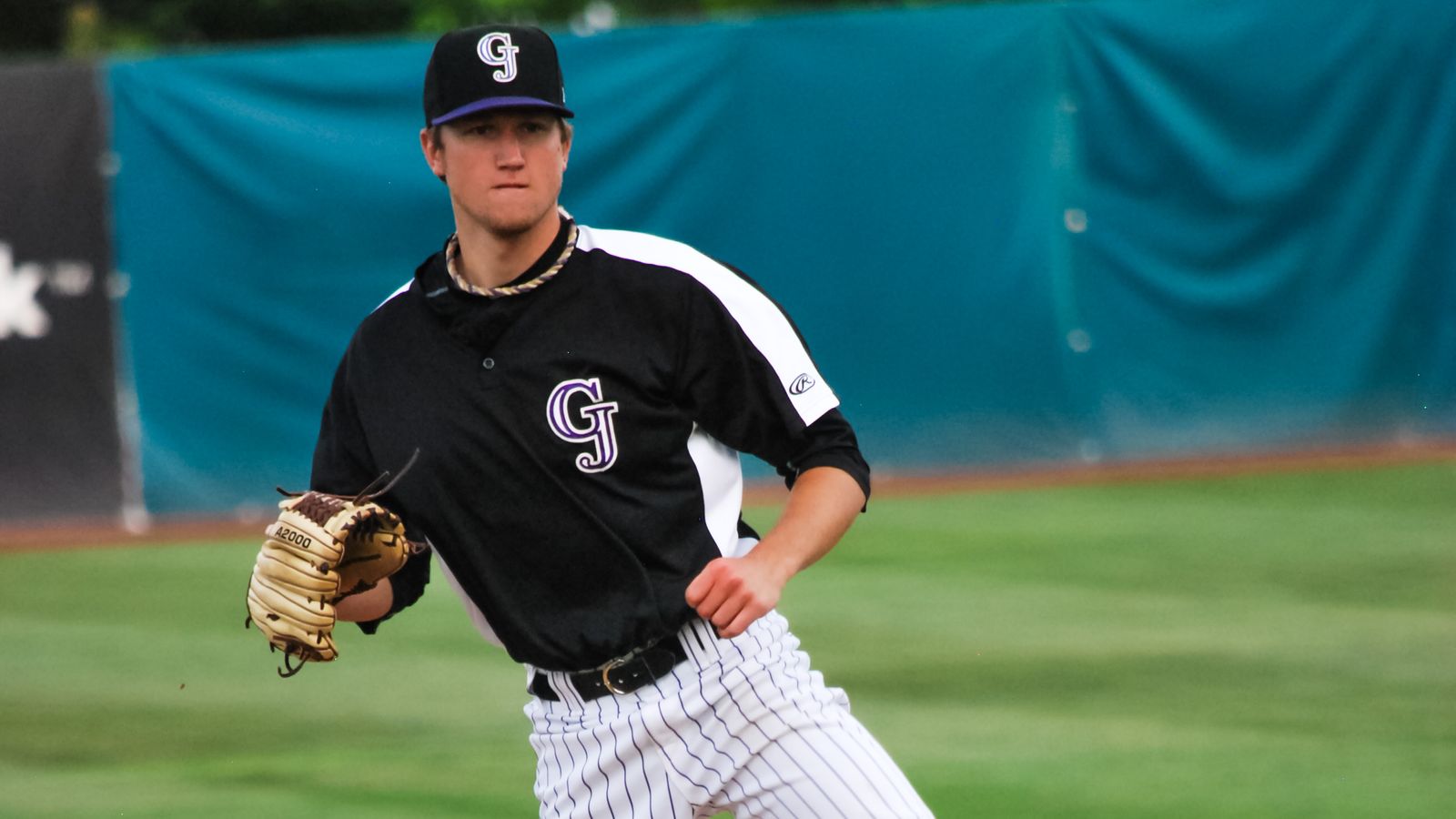
Marquez and Freeland have ceilings that some believe are as high as Gray and Hoffman. We are inclined to agree with that belief but will say that both Gray and Hoffman have a better chance of reaching their ceilings. Either of these depth options could step in given the inevitable injury or be asked to break into the Bigs in a bullpen role. Marquez already has a very limited experience with that. Whatever the case, the Rockies have two guys with B+/A potential waiting in the wings.
After them, the Rockies still have a long line of interesting names who would be ready to step in immediately if a need arises either in the rotation or in the bullpen. Antonio Senzatela has talent that slides in just under the level of Freeland and Marquez and Yency Almonte is just behind him. On the high-floor side of things, the Rockies have options in Shane Carle, Harrison Musgrave, and Zach Jemiola, who at 22 has been showing well in spring training so far.
Why you might not want to get too carried away:
Pitching prospects throughout all of history have been a bit of a crapshoot. Doubly so in Colorado. You just can’t count on any one guy in the depth pool working out for the best.
Final thoughts:
The Tyler’s Anderson and Chatwood have injury concerns. Jon Gray and Jeff Hoffman (and German Marquez and Kyle Freeland) have volatility concerns. Chad Bettis has ceiling concerns. And even though each one of these guys would — forgive the pun — balk at such phrasing, they all have the Coors Field concern.
But Jonah Keri was right, and after a close examination of the evidence, it’s clear his statement was hardly controversial. Everyone has questions in their starting rotation. Even the Boston Red Sox, though their question is more “how do we get all these guys in?” And, for the first time maybe ever, the Rockies are much closer to having that question than their traditional one of “what the heck are we gonna do after the first couple of guys or if anyone gets hurt?”
If you count Marquez and Freeland — and we do — the Rockies have six potential aces on their 40-man roster. And sources are telling us that a typical rotation only carries five guys.
They won’t get an ace out of each of them, but those are some solid dice rolls in their favor. But with so many in the mix, it seems unlikely that none will grab that coveted designation. How the rest of it shakes out will determine whether the Rockies have a rotation filled with guys overqualified to be at the back end, and even guys who could be great starters get pushed into bullpen roles, or if the volatility of youth and Colorado take each one down one by one.
This is the most talented group the franchise has ever seen. But they also come in with a combined grand total of 991.7 innings pitched in MLB. Why you might not want to get too carried away? Inexperience.
How quickly it comes together for this incredibly talented bunch — or if it comes together at all — will be a major factor this season. But even the most stringent skeptics have to admit that the future of Rockies pitching shines brighter that it ever has before.
Comments
Share your thoughts
Join the conversation



